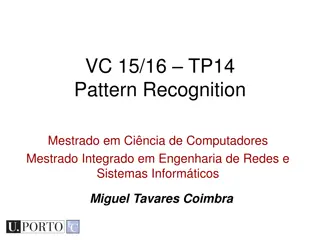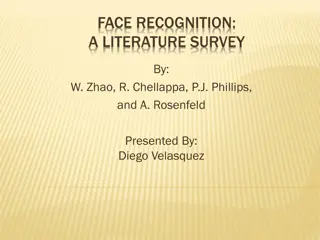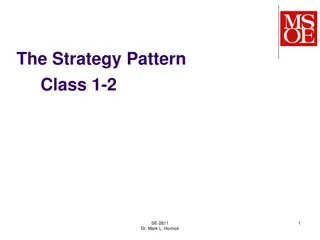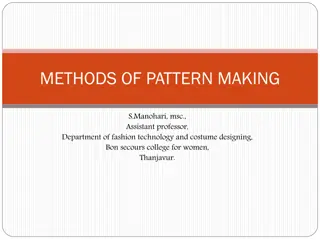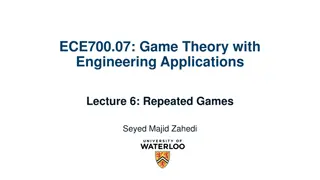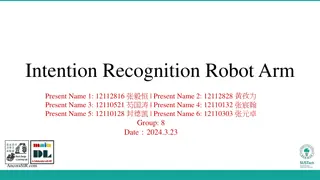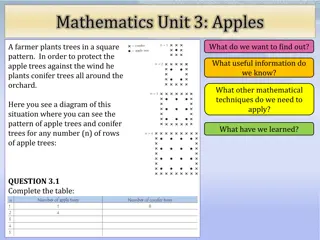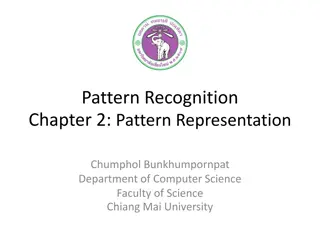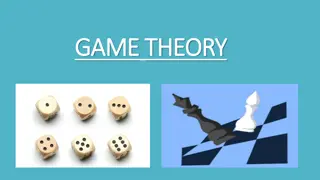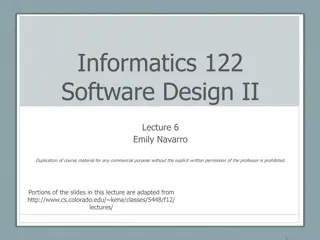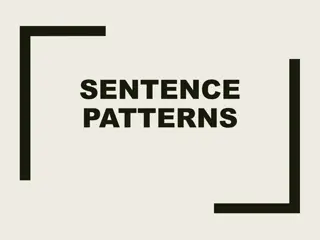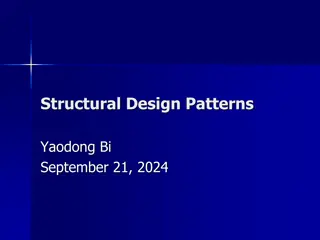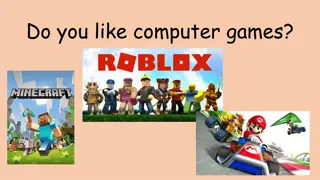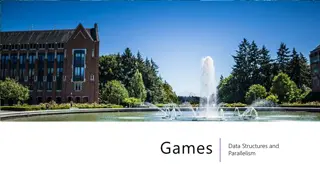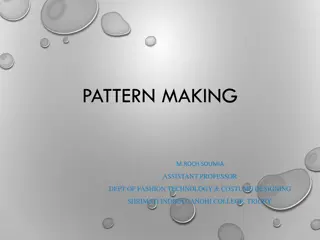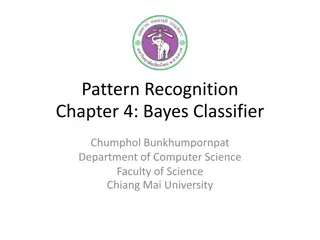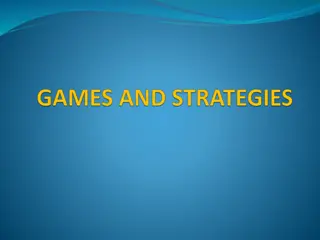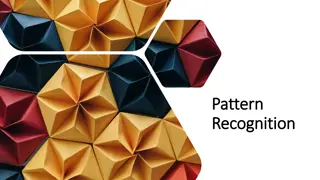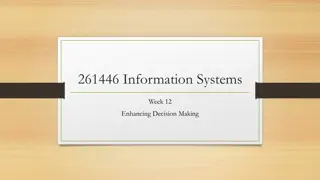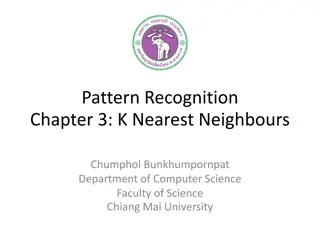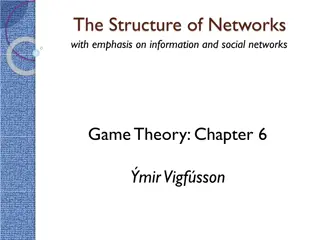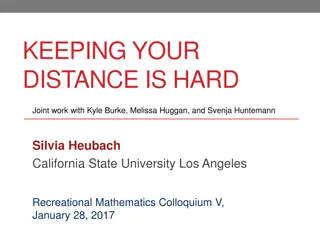Pattern Recognition in Computer Games: Exploring Strategies and Decision-Making
Computer games provide a unique platform for pattern recognition, where synthetic opponents challenge the computer to analyze human player behavior. This process involves abstracting information from the game world, constructing concepts, and deducing patterns. The intersection of pattern recognition, real-time strategy, decision-making levels, and strategic/tactical considerations in games like StarCraft II offers a fascinating insight into AI capabilities and human-machine interactions.
Download Presentation

Please find below an Image/Link to download the presentation.
The content on the website is provided AS IS for your information and personal use only. It may not be sold, licensed, or shared on other websites without obtaining consent from the author. Download presentation by click this link. If you encounter any issues during the download, it is possible that the publisher has removed the file from their server.
E N D
Presentation Transcript
Pattern Recognition in Computer Games Chumphol Bunkhumpornpat Department of Computer Science Faculty of Science Chiang Mai University
2 204453: Pattern Recognition
Google AI beats top human players at strategy game StarCraft II AlphaStar was built by Google s AI firm DeepMind. a machine capable of learning or understanding any task that humans can AlphaStar has 1,026 actions to choose from at any moment. DeepMind limited the speed of AlphaStar s reflexes to that of experienced human players. AlphaStar placed within the top 0.5% of all players on the European server. 3 204453: Pattern Recognition
StarCraft II players battle each other in a futuristic warzone. 4 204453: Pattern Recognition
Introduction Computer games are an unique application area for pattern recognition. Challenging synthetic opponents computer should recognize the behavior of a human player. The purpose of pattern recognition is to abstract relevant information from the game world and to construct concepts and to deduce patterns from this information. 5 204453: Pattern Recognition
Relations between the world, pattern recognition, and decision-making 6 204453: Pattern Recognition
Pattern Recognition in Computer Games RTS: Real-Time Strategy Fighting Sports reacts to enemy's frequent moves remedies threats and strategizes reads the match 7 204453: Pattern Recognition
Decision Making Levels Stance Towards Players Game Graphs PERSPECTIVE VIEWS OF PATTERN RECOGNITION IN COMPUTER GAMES 8 204453: Pattern Recognition
Decision Making Levels Strategical Tactical Operational 9 204453: Pattern Recognition
Strategical Long Period of Time Large Amount of Data Inhabitants Items Events High Cost of a Wrong Decision Speculative: What-If Scenarios Offline: Background 10 204453: Pattern Recognition
Operational Concrete Atomatory Entities Reactive Short-Term Real-Time Online: in-the-Field Irrevocable Problems 11 204453: Pattern Recognition
Tactical connects between strategical and operational considers a group of entities and their cooperation made more frequently than strategical, pattern recognition has less time to use The quality cannot be as high as on upper level. 12 204453: Pattern Recognition
Stance Towards Players Enemy Ally Neutral 13 204453: Pattern Recognition
Enemy requires modus operandi of the player provides challenge 14 204453: Pattern Recognition
Ally accounts human perspective but not decision making system Synthetic Reconnaissance Officer It reports on enemy movement. It suggests effective counteractions. 15 204453: Pattern Recognition
Neutral Autonomous Camera Director controls camera movement in sports games dictates by television practice Referee allows the play continue interprets causality between offence and subsequent events Interface should adapt dynamically to the needs of a player. 16 204453: Pattern Recognition
Game Graph A story progresses linearly. A game provides an illusion of free will. Nodes Game States Direct Arches Actions The game properties can be analyzed through graph concepts (e.g., repetitiveness corresponds to cycles in the graph). 17 204453: Pattern Recognition
Outdegree The number of direct arches leaving a node The greater the outdegree means more freedom the player has. 18 204453: Pattern Recognition
Indegree The number of direct arches entering the node Uniqueness of a response can be measured as the indegree. 19 204453: Pattern Recognition
A linear (a story) allows no diversion 20 204453: Pattern Recognition
node Sihas an outdegree of 2 21 204453: Pattern Recognition
node Snhas an indegree of 3. 22 204453: Pattern Recognition
Each action has now a unique response 23 204453: Pattern Recognition
References T. Kaukoranta, J. Smed, and H. Hakonen, Role of Pattern Recognition in Computer Games, Proceedings of the 2ndInternational Conference on Application and Development of Computer Games, pp. 189--94, Hong Kong SAR, China, 2003. https://www.nature.com/articles/ d41586-019-03298-6 24 204453: Pattern Recognition


